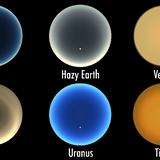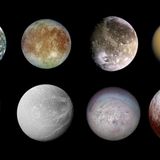RECENT ARTICLES

A Simulation of Sunsets on Other Worlds: From Venus to Titan
When we think of exploring other planets and celestial bodies, we tend to focus on the big questions. How would astronauts live there when they’re not working? What kind of strategies and technology would be needed for people to be there long term? How might the gravity, environment, and radiation effect humans who choose to make places like the Moon, Mars, and other bodies place their home? We tend to overlook the simple stuff…For example, what will it be like to look up at the sky? How will Earth, the stars, and any moon in orbit appear? And how will it look to watch the sun go down?...…When we think of exploring other planets and celestial bodies, we tend to focus on the big questions. How would astronauts live there when they’re not working? What kind of strategies and technology would be needed for people to be there long term? How might the gravity, environment, and radiation effect humans who choose to make places like the Moon, Mars, and other bodies place their home? We tend to overlook the simple stuff…For example, what will it be like to look up at the sky? How will Earth, the stars, and any moon in orbit appear? And how will it look to watch the sun go down?...WW…

Planets With Large Oceans are Probably Common in the Milky Way
Within our Solar Systems, there are several moons where astronomers believe life could be found. This includes Ceres, Callisto, Europa, Ganymede, Enceladus, Titan, and maybe Dione, Mimas, Triton, and the dwarf planet Pluto. These “” are believed to have abundant liquid water in their interiors, as well as organic molecules and tidal heating – the basic ingredients for life.Which raises the all-important question: are similar moons to be found in other star systems? This is the question NASA planetary scientist and her team from NASA’s Goddard Space Flight Center sought to address. In a...…Within our Solar Systems, there are several moons where astronomers believe life could be found. This includes Ceres, Callisto, Europa, Ganymede, Enceladus, Titan, and maybe Dione, Mimas, Triton, and the dwarf planet Pluto. These “” are believed to have abundant liquid water in their interiors, as well as organic molecules and tidal heating – the basic ingredients for life.Which raises the all-important question: are similar moons to be found in other star systems? This is the question NASA planetary scientist and her team from NASA’s Goddard Space Flight Center sought to address. In a...WW…
- Total 2 items
- 1